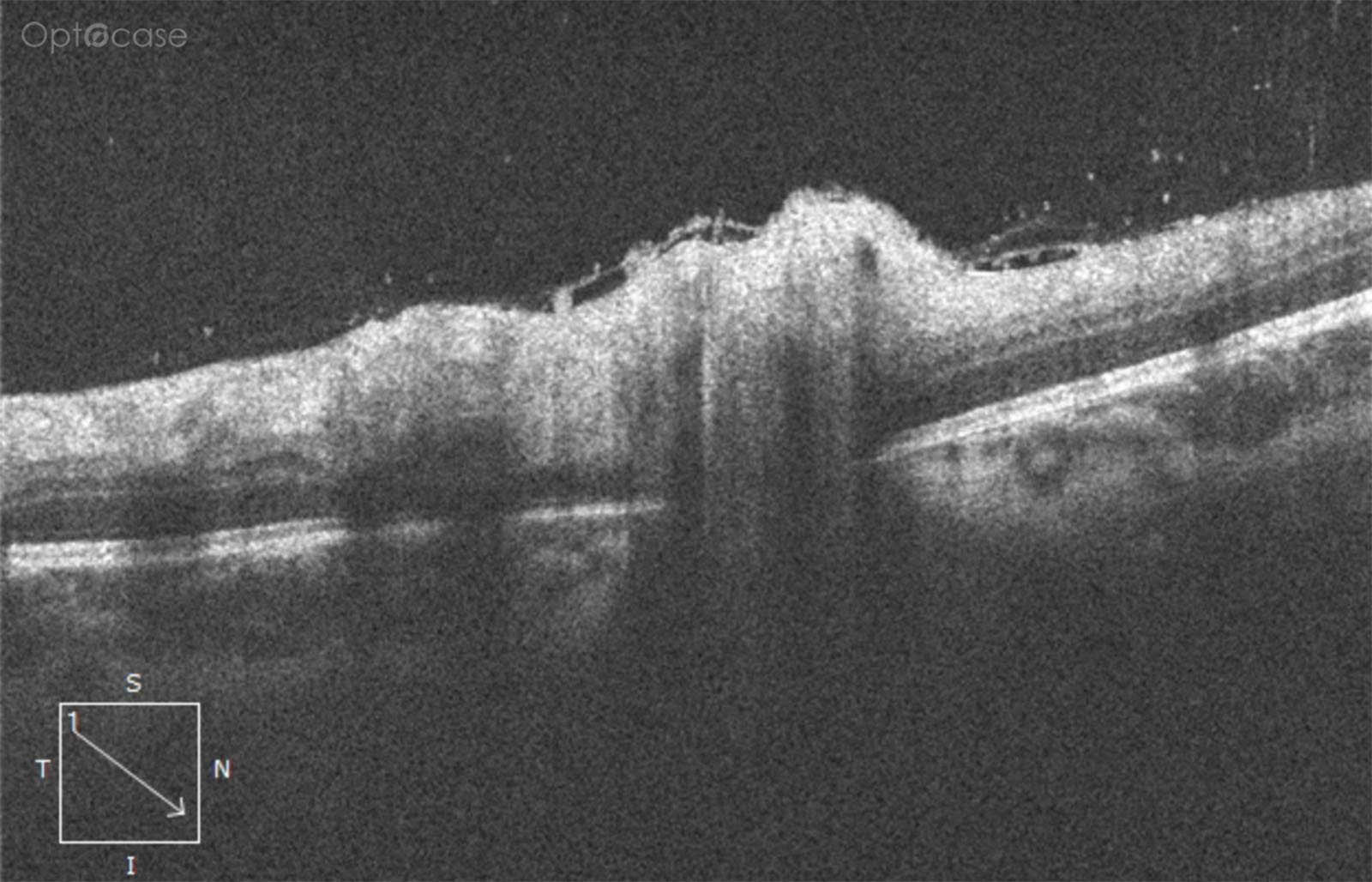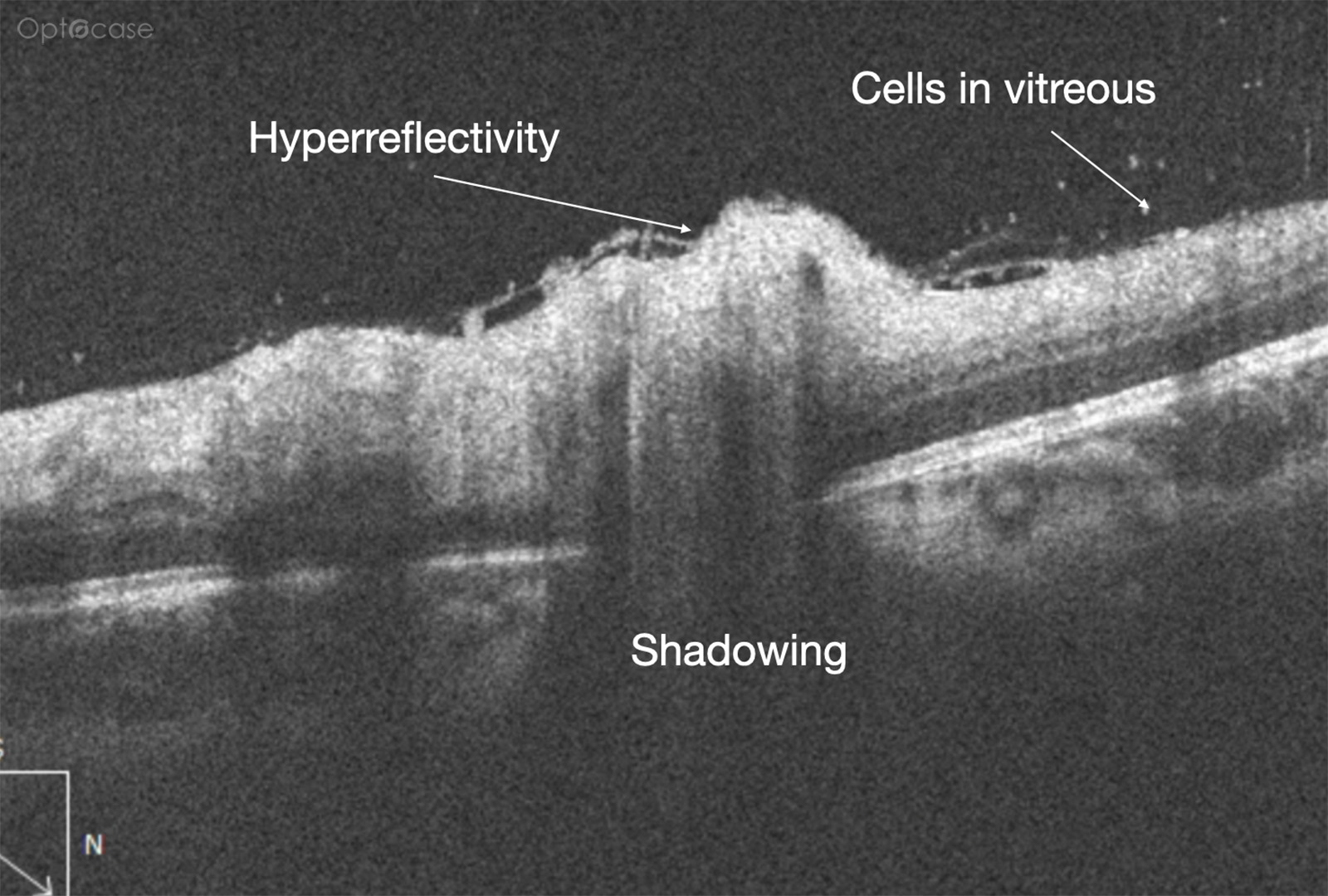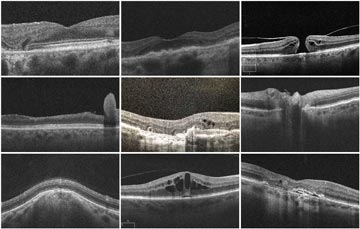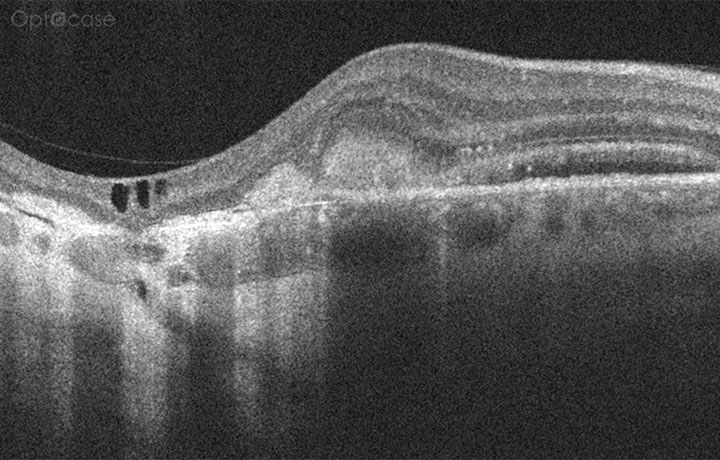This patient noted a 1-week history of floaters. Why?

Analysis
In this patient there is inner retinal hyperreflectivity (this image is taken from the retinal periphery). There was overlying vitreous opacification. This lesion corresponded to an area of retinal whitening and hemorrhage (see video).
The patient was diagnosed with acute retinal necrosis.
In this tip's accompanying 9 min. video, we'll review:
- A ddx for inner retinal thickening
- When to consider ARN
- How ARN is differentiated from CMV retinitis

OCT Tip
In a patient with inner retinal thickening and vitreous cells, consider the possibility of ARN.
Not receiving our tips yet? Subscribe to receive them straight to your inbox.



